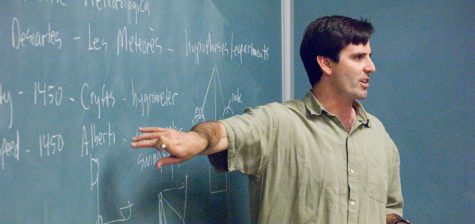A clean environment by 2050
Stanford professor outlines how to eliminate fossil fuels
May 17, 2016

The U.S. could be energy efficient using 100 percent wind, water and solar power by 2050, an environmental engineer told students at De Anza College’s Kirsch Center on April 27.
Stanford environmental professor Mark Jacobson spoke to students about changing the energy infrastructure and reducing the world’s air pollution as part of the Visiting Speakers Series.
He started off by showing data about air pollution and its negative health effects.
“Almost all of the pollution is coming from Jacobson said. “Worldwide, we have 47 million people die prematurely each year from air pollution. The life expectancy for a person living in the big city is about six to nine months shorter than the average person.”
His solution for reducing air pollution and global warming is to change the energy infrastructure by ditching oil and storing and electrifying wind, water and solar energy instead.
“If we can electrify everything and produce our electricity in a clean way we can solve these major problems,” he said.
He rebutted the concern of renewable energy being unreliable by giving examples of current technology that utilizes and stores solar, wind and water energy.
“This is existing technology that’s been here for a long time,” he said
He went into detail about how this technology can be utilized for transportation, electricity, heating, cooling and industry use.
Less than 1 percent of land would be used if we start utilizing alternative energy and it would provide more jobs, help reduce international conflicts like terrorism and end energy poverty in the world, Jacobson said.
He briefly touched on the subject of the political influence the oil, bio-fuel and gas industry has on U.S. policies, encouraging students to rally for policy changes.
Jacobson encouraged people to start working toward environmentally friendly energy now by making their homes and lifestyles more energy efficient.
“We need to start now, 80 percent of the world’s energy infrastructure needs to change by 2030 and 100 percent by 2050.”
